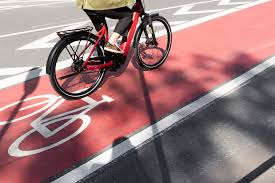Stickers have taken the world by storm. From branding and marketing to personal expression and decor, these versatile little items pack a powerful punch. Whether you’re a small business owner, a DIY enthusiast, or just someone who loves to get creative, understanding the sticker printing process can help you bring your ideas to life. In this blog, we’ll explore everything you need to know about sticker printing, from design tips to the best printing methods and materials.
Why Stickers?
Before diving into the technical aspects, let’s talk about why stickers are so popular:
- Versatility: Stickers can be used for a myriad of purposes—branding, promotional giveaways, decorating personal items, and even for fun activities like scrapbooking.
- Cost-Effective: Compared to other forms of marketing and decoration, stickers are relatively inexpensive to produce, especially in bulk.
- Customizability: With the right tools and materials, you can create stickers in any shape, size, and design, making them perfect for unique, personalized projects.
Designing Your Stickers
The first step in sticker printing is creating a design. Here are some tips to get started:
- Know Your Purpose: Are your stickers for business branding, product labels, or personal use? This will guide your design choices.
- Use High-Resolution Images: To ensure your stickers look sharp and professional, use images with a resolution of at least 300 DPI.
- Choose the Right Software: Design software like Adobe Illustrator, Photoshop, or even free tools like Canva can help you create professional-looking designs.
- Consider the Shape: Stickers can be die-cut into any shape. Think about whether a standard circle or rectangle works for your design, or if a custom shape would make it stand out more.
- Add a Border: If your stickers are die-cut, adding a border around your design can help it stand out and make cutting easier.
Choosing the Right Materials
The material you choose for your stickers will affect their appearance, durability, and application. Here are the most common options:
- Vinyl: Durable and weather-resistant, vinyl is perfect for outdoor stickers, bumper stickers, and any application where longevity is key.
- Paper: Ideal for indoor use, paper stickers are cost-effective and perfect for product labeling and packaging.
- Clear: Clear stickers give a sleek, modern look and are great for window decals and minimalist designs.
- Specialty Materials: Materials like holographic, metallic, or glitter paper can add a unique touch to your stickers, making them eye-catching and special.
Printing Methods
Once your design is ready and you’ve chosen your materials, it’s time to print. There are several printing methods available, each with its own pros and cons:
- Inkjet Printing: Ideal for small batches and home use, inkjet printers are affordable and can produce high-quality, colorful prints. Make sure to use inkjet-compatible materials.
- Laser Printing: Laser printers are great for larger batches and provide crisp, clean prints. They’re also faster than inkjet printers and use toner instead of ink, which is more cost-effective in the long run.
- Professional Printing Services: For the best quality and durability, consider using a professional printing service. They offer various printing techniques like digital printing, screen printing, and offset printing, catering to different needs and budgets.
Cutting and Finishing
The final step in sticker production is cutting and finishing. Here’s what you need to know:
- Cutting Machines: For intricate designs and large batches, a cutting machine like a Cricut or Silhouette can save time and ensure precision.
- Hand Cutting: For simple shapes or small batches, hand cutting with scissors or a craft knife is a viable option.
- Lamination: To increase durability, especially for stickers exposed to the elements, consider laminating your stickers. This adds a protective layer, making them waterproof and resistant to fading.
Practical Applications
Now that you know how to create your own stickers, let’s explore some practical applications:
- Branding: Custom stickers with your logo are perfect for packaging, promotional giveaways, and merchandise.
- Event Decor: Stickers can be used to personalize party favors, wedding invites, and event decor.
- Personal Expression: From laptop decals to planner stickers, express your personality and interests with custom designs.
- DIY Projects: Enhance scrapbooks, journals, and craft projects with unique, homemade stickers.



